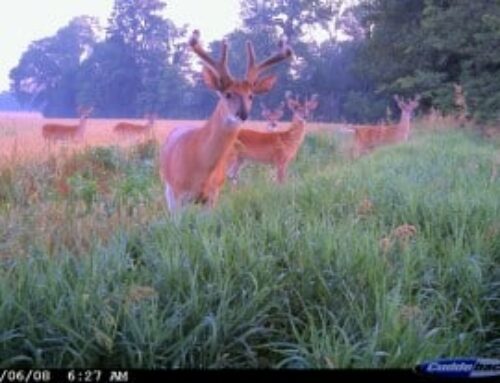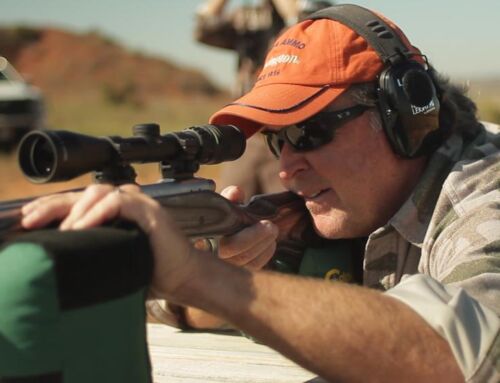A new regulation this year in Virginia prohibits the use of minerals to attract deer in one of the counties I hunt. Since I’m now forced to give up monitoring mineral licks, I’m making mock scrapes and setting trail cameras beside them.
Several studies have shown that whitetail bucks will visit scrapes with fresh scent year-round, and especially in the summer months. The fake scrapes are good places (not as good as mineral licks, but the next best thing) to get images of bucks that will roam your area this fall.
A mock scrape is not only scent-based, but also a visual sign. Rake out at least a 2 foot by 3 foot area below an overhanging branch. As you rake, envision a buck. He scrapes with his hooves primarily in one direction, and your raking should be done the same way, leaving the debris on the back side of the scrape.
Make your scrape below a prominent “lick” branch that bucks will most definitely rub with their eyes and racks, and chew on. The branch should be approximately 4 feet high–never touch it!
Use a dripper system with a scrape solution. Notes: 1) Do not use doe in heat or an estrus scent in the summer, but a basic deer smell; 2) Here in Virginia urine-based scents are prohibited, so I use synthetic scent in my drippers—check your regs.
While any dirt will do, the best mock scrapes have soils with real deer scent in them. Once you create a mock scrape in a spot you really like this summer, make it a point to collect urine-soaked soil and droppings from real scrapes later this fall. Rake an existing scrape down to bare soil and trowel 3 to 5 pounds of the deer-scent dirt into a plastic bag.
Carry the dirt to a mock scrape and spread it evenly across the soil. While this urine-scented soil is not necessary, it adds realism and makes for a quicker and a more consistently attended scrape year-round.






